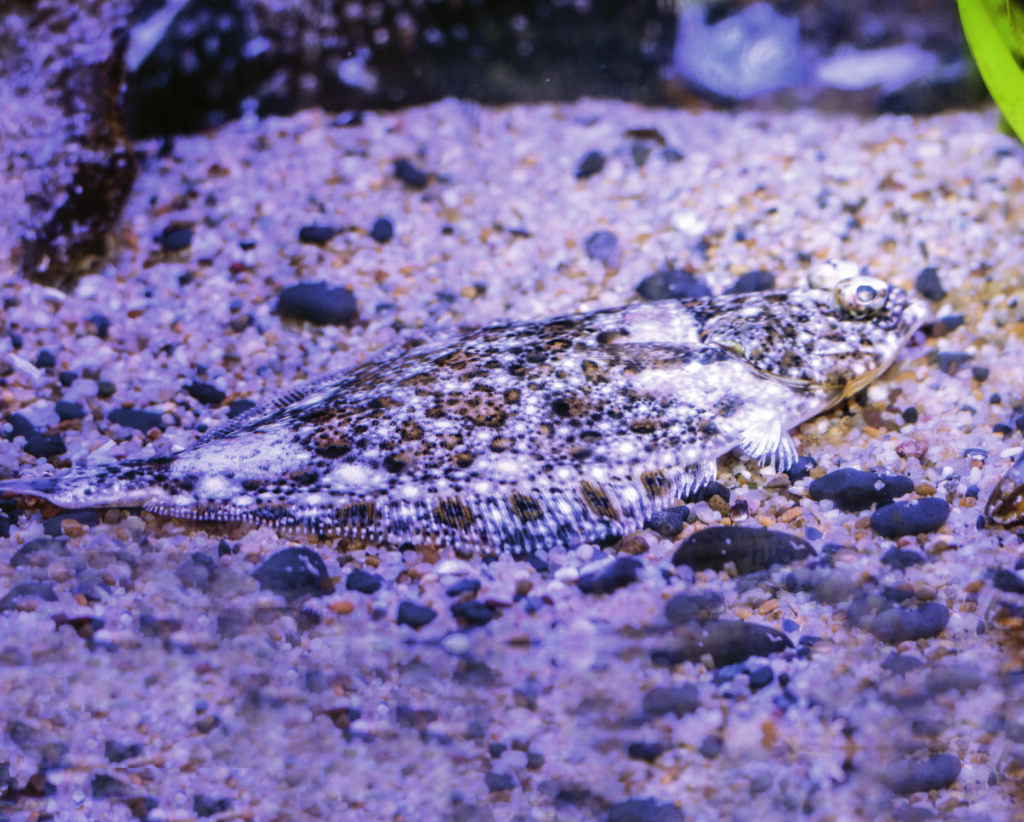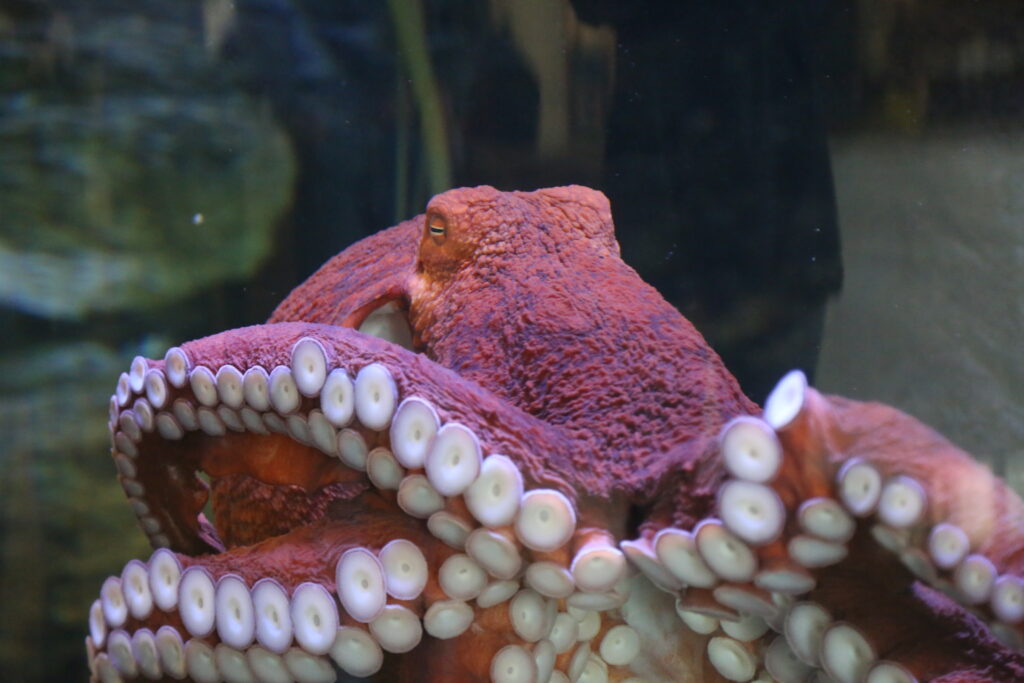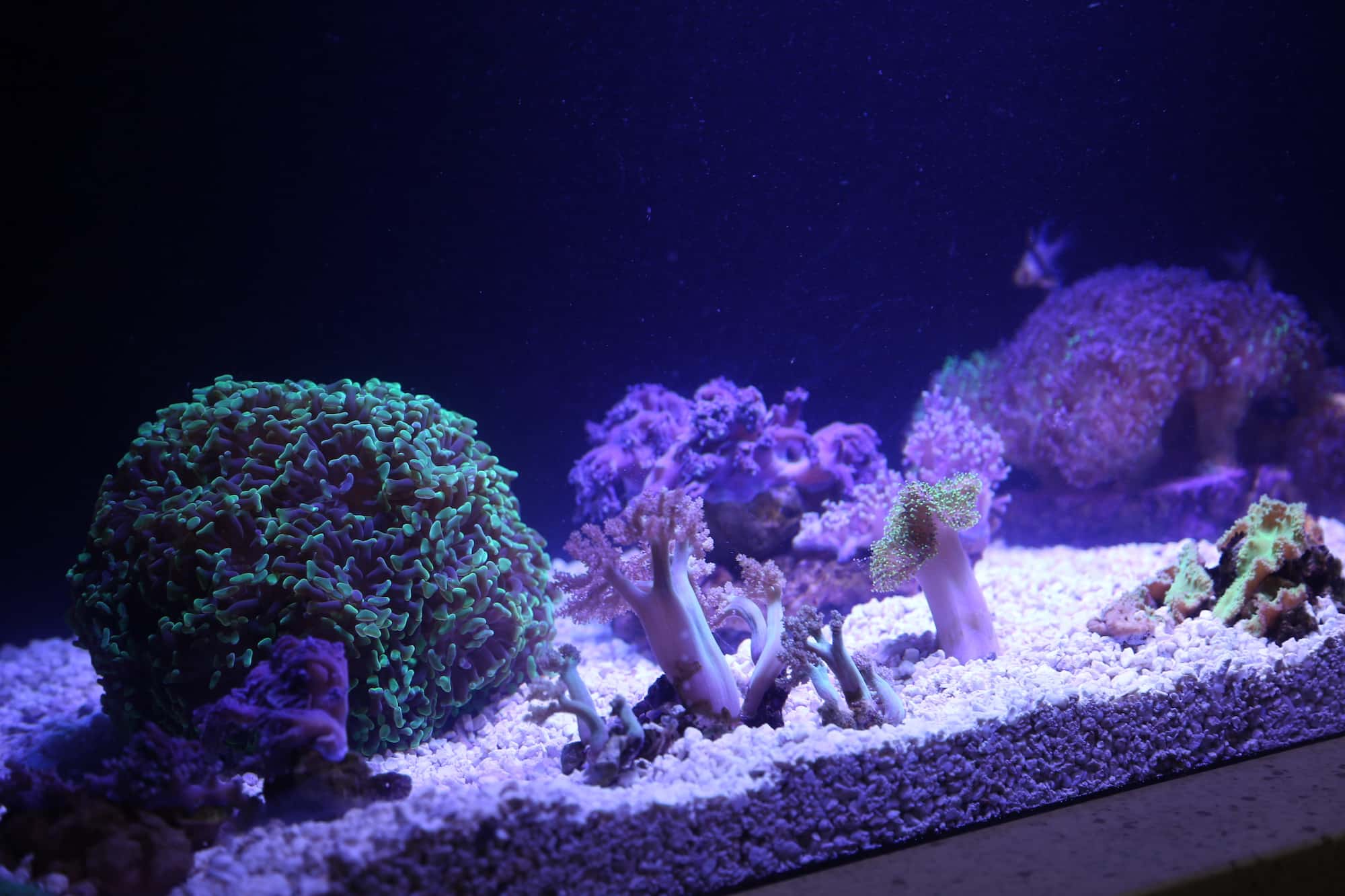What Lives on the Sandy Coast?
Here, much of the life is hidden beneath the sand or in the cracks between rocks.
Many surf zone animals bury themselves to escape the drying sun and the sharp eyes of shorebirds and marine predators. The animals of the sandy shores can also be so tiny they almost escape observation, but even the smallest still play a vital role in nature’s constant cycle of life.
One of the highlights of the Sandy Coast gallery includes a freestanding pier pilings exhibit. This tank replicates the unique habitat formed by docks and piers where anemones and mussels encrust the human-made features and Dungeness crabs scuttle along the bottom.
Nearby, a separate exhibit replicates the constant ebb and flow of the surf against a tide pool filled with anemones, sculpins and oysters. Other exhibits display the natural habitats of the delicate sea pen and the curious-looking flatfish. In all, the gallery holds thirteen separate exhibits.

What Lives at the Rocky Coast?
The Oregon coast is famous for its rocky shores. Our uniquely beautiful coastline is visited by millions of people each year and provides habitats to countless species of animals and plants.
In order to survive in this rocky intertidal zone, plants and animals must be adapted to survive both the cold water and the hot sun. While some animals keep cool and wet in the tide pools, other trap moisture in watertight shells or crawl into the damp shade under rocks or beneath the broken leaves of bull kelp.
Here, much of the life is hidden beneath the sand or in the cracks between rocks. Many surf zone animals bury themselves to escape the drying sun and the sharp eyes of shorebirds and marine predators. The animals of the sandy shores can also be so tiny they almost escape observation, but even the smallest still play a vital role in nature’s constant cycle of life.
The centerpiece of the Rocky Coast Gallery is our touch-pool. Staffed by volunteers, this exhibit lets visitors gently interact with tide pool residents like sea stars, gumboot chitons and anemones. Other gallery highlights include a tide pool cut-away raked by waves and a wall of small tanks with a variety of rocky shore animals.
The Rocky Coast Gallery holds a total of 15 exhibits, including habitats for the fearsome-looking (but gentle) wolf eel, brightly-colored rockfish and a wide range of sea stars, limpets and other invertebrates.
After our 2024 renovations, Rocky Coast gallery is also home to our Giant Pacific Octopus tank. With a larger tank to spread all eight limbs, and a better vantage for guests to take a peak, be sure to swing by and see if you can see the master of camouflage in action.

What Lives in Connected Coasts ?
A group of smaller tanks offers visitors an opportunity to see animals like brittle stars, sponges, and hagfish up close and personal.

What Lives in Passages of the Deep?
The Aquarium’s Passages of the Deep exhibit allows the visitor to literally immerse themselves in the ocean realm that exists right off the Oregon coast. A series of underwater walkways leads the visitor from the dark, quiet canyons of the Orford Reef, through the sparkling and teeming waters of Halibut Flats, and finally into the vast blue expanse of the Open Sea. As you pass through these three ecosystems, you symbolically move further into the Pacific Ocean, encountering vastly different animals along the way.
Don’t want to wait till your next visit? You can check out our
shark live camera that peers into part of our Passages of the Deep tunnels.